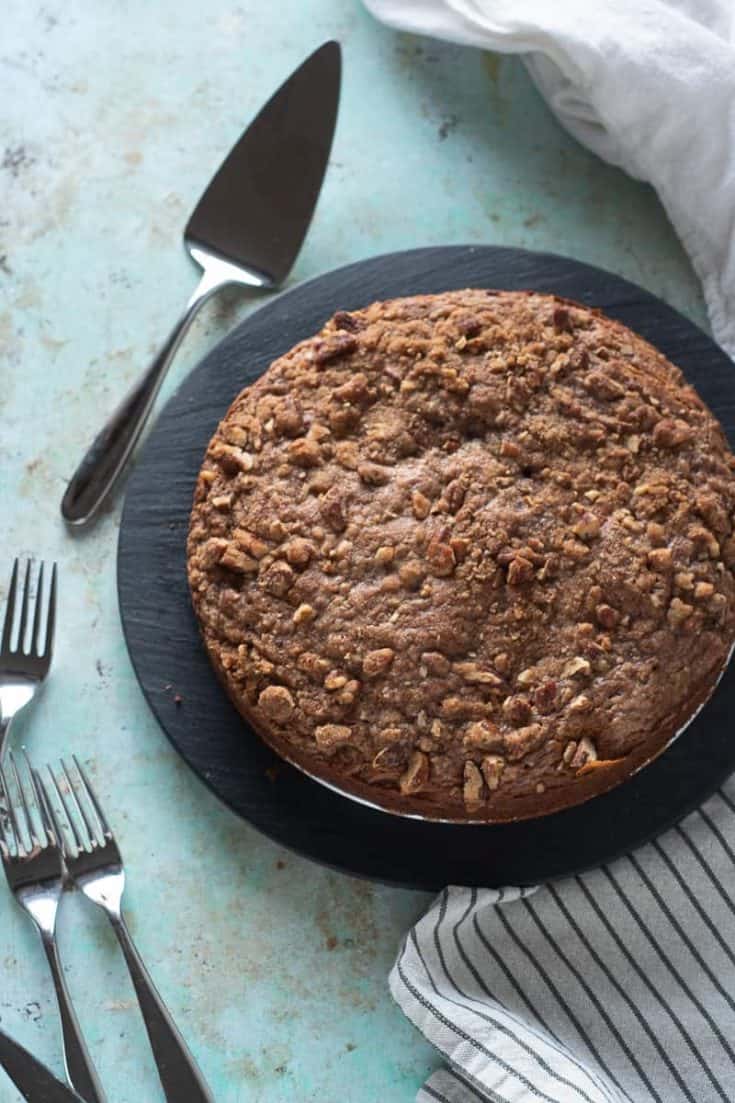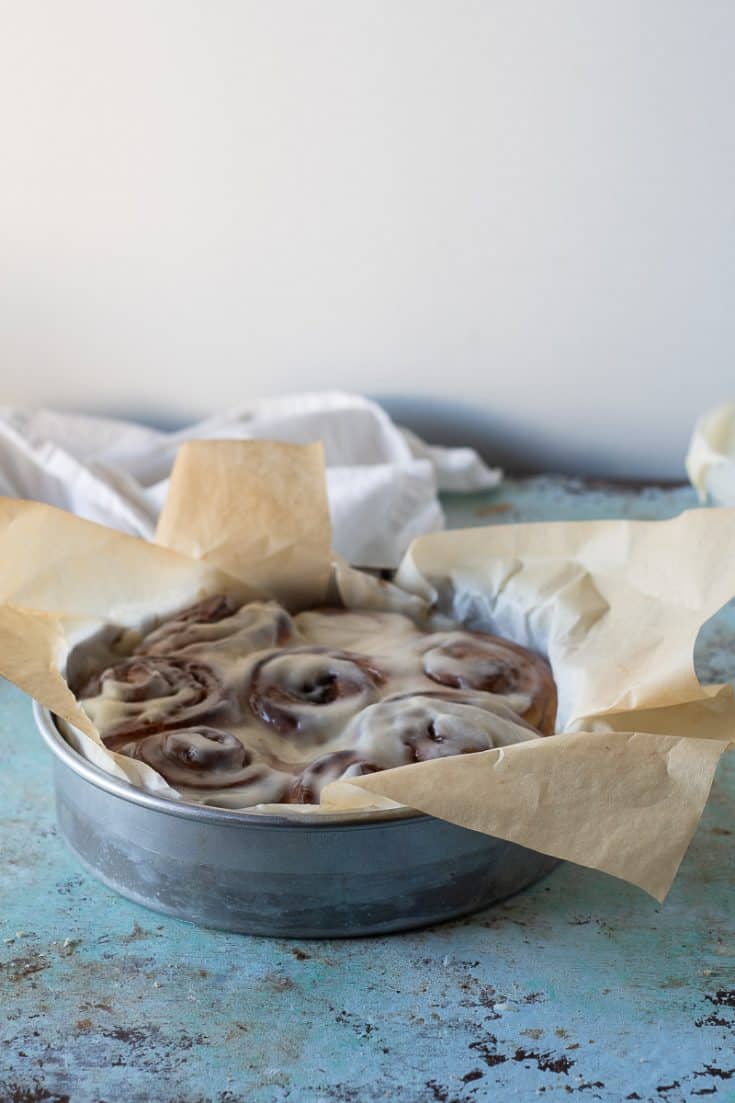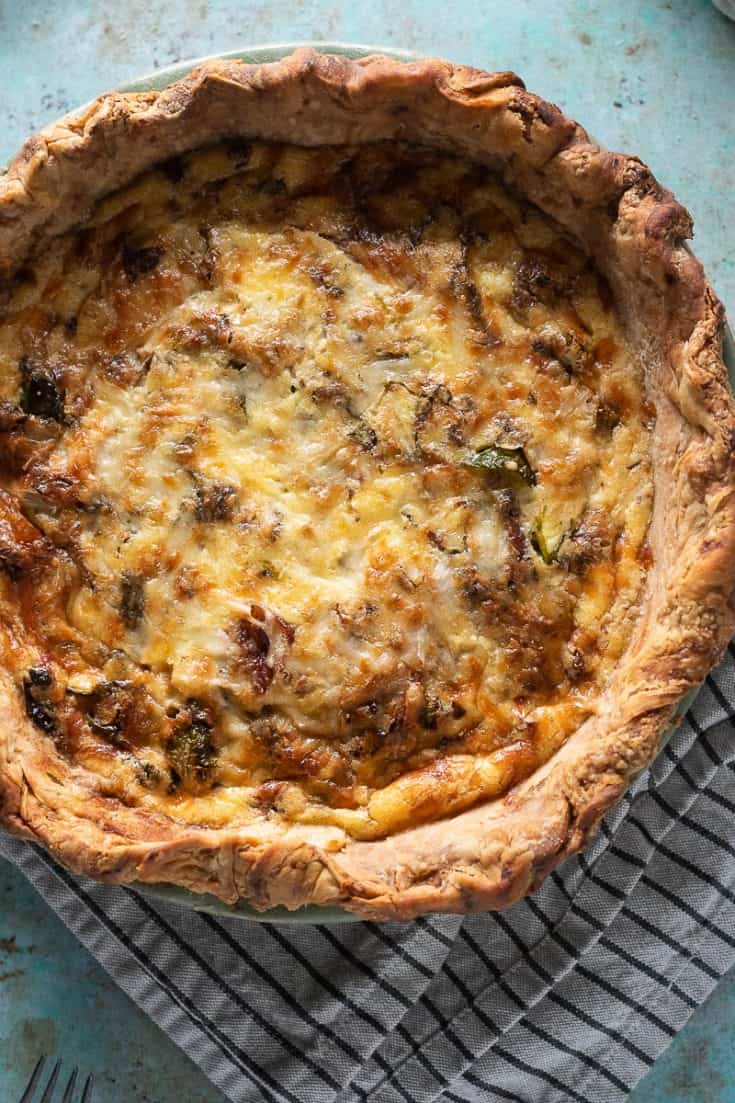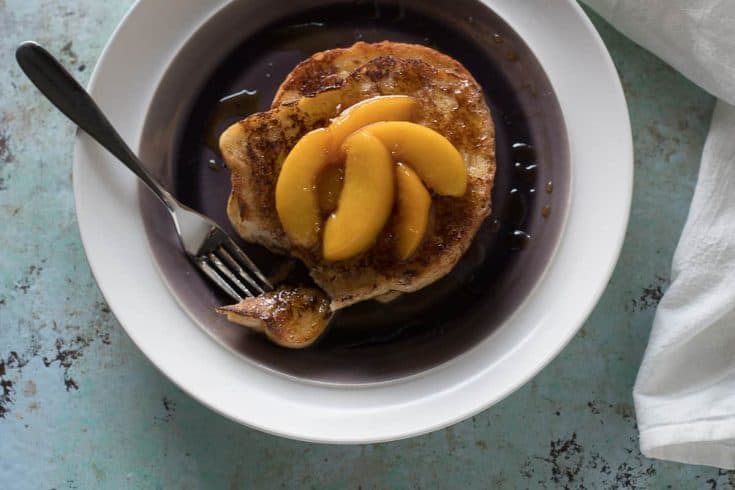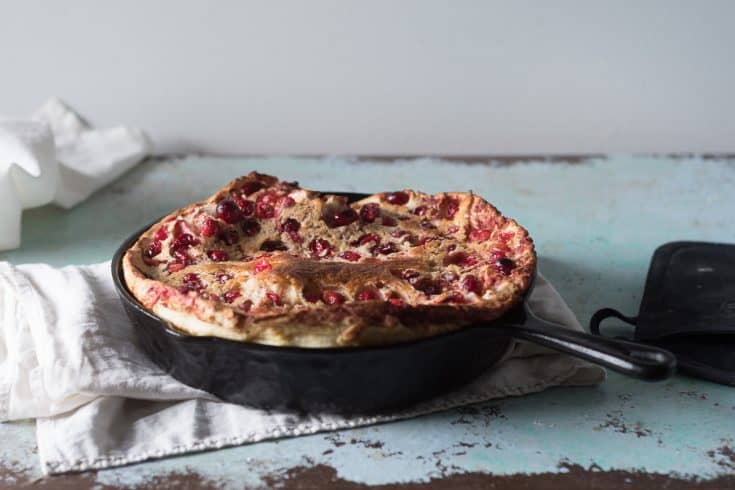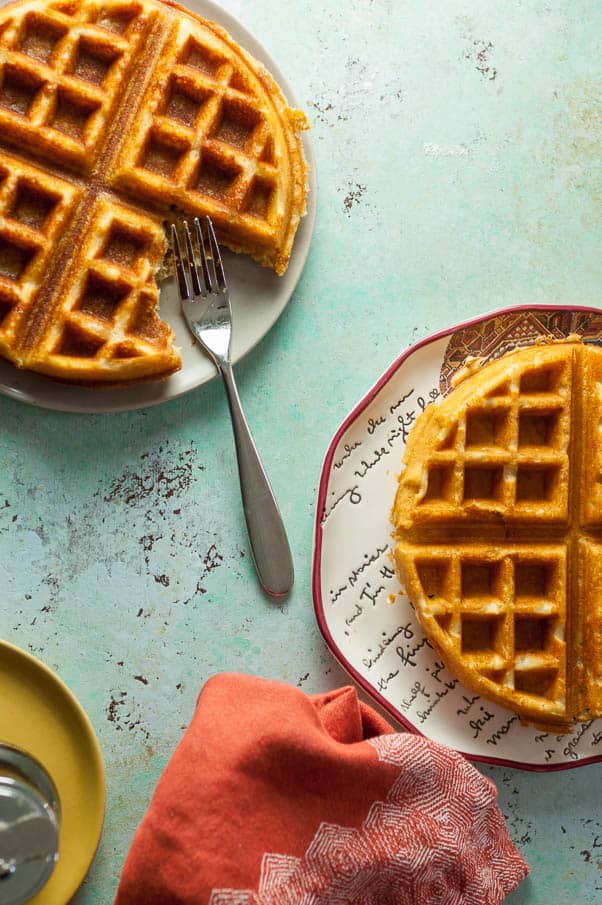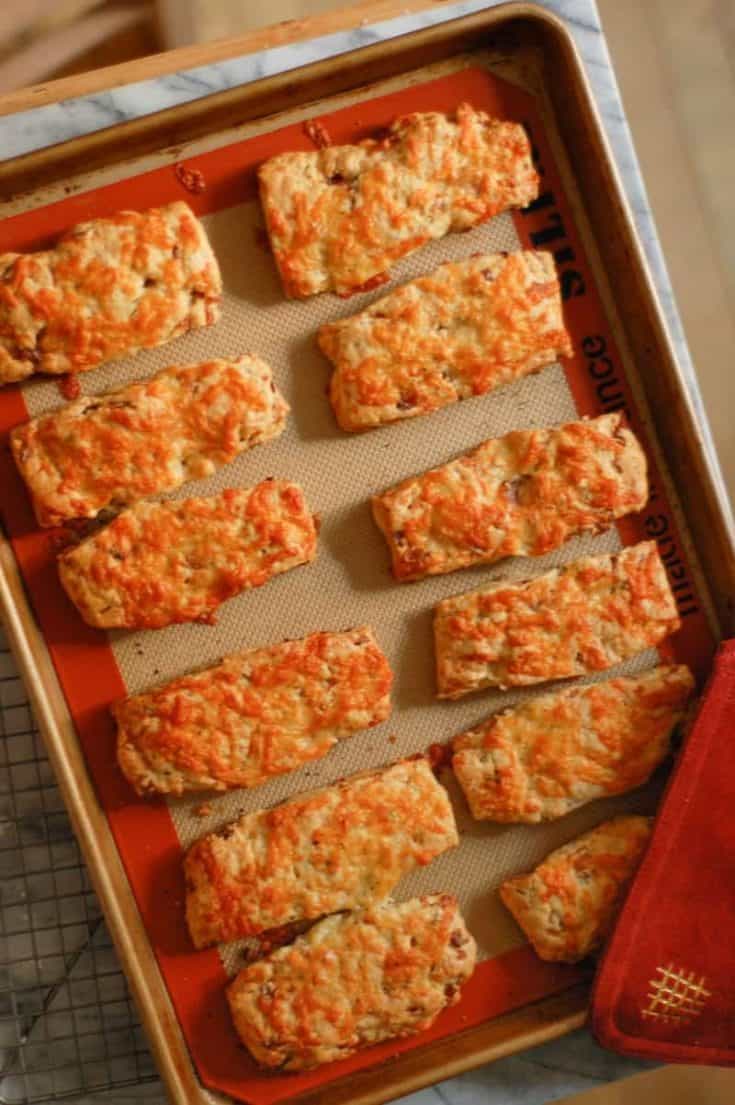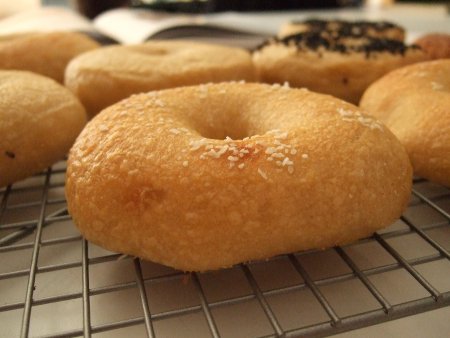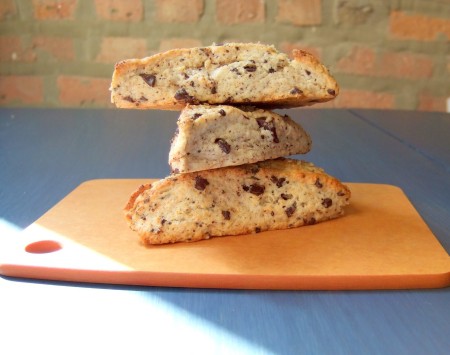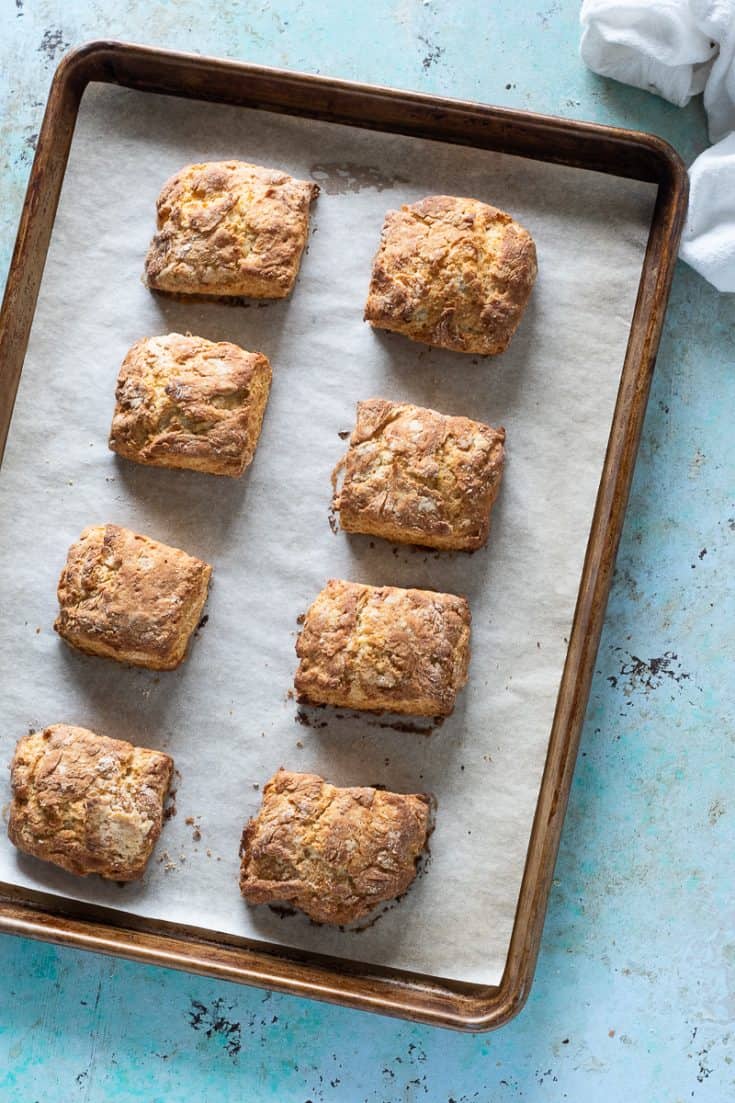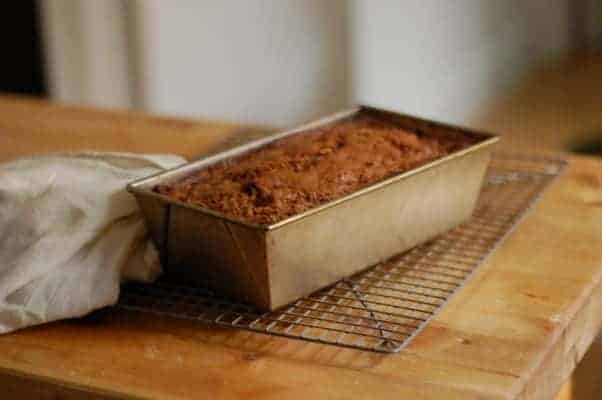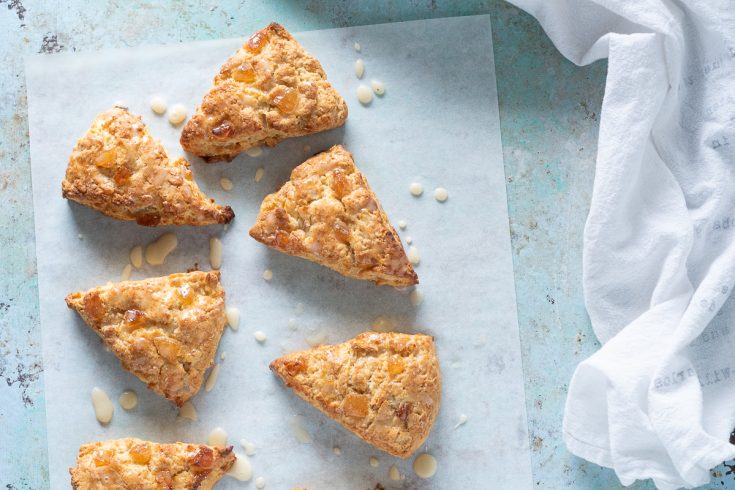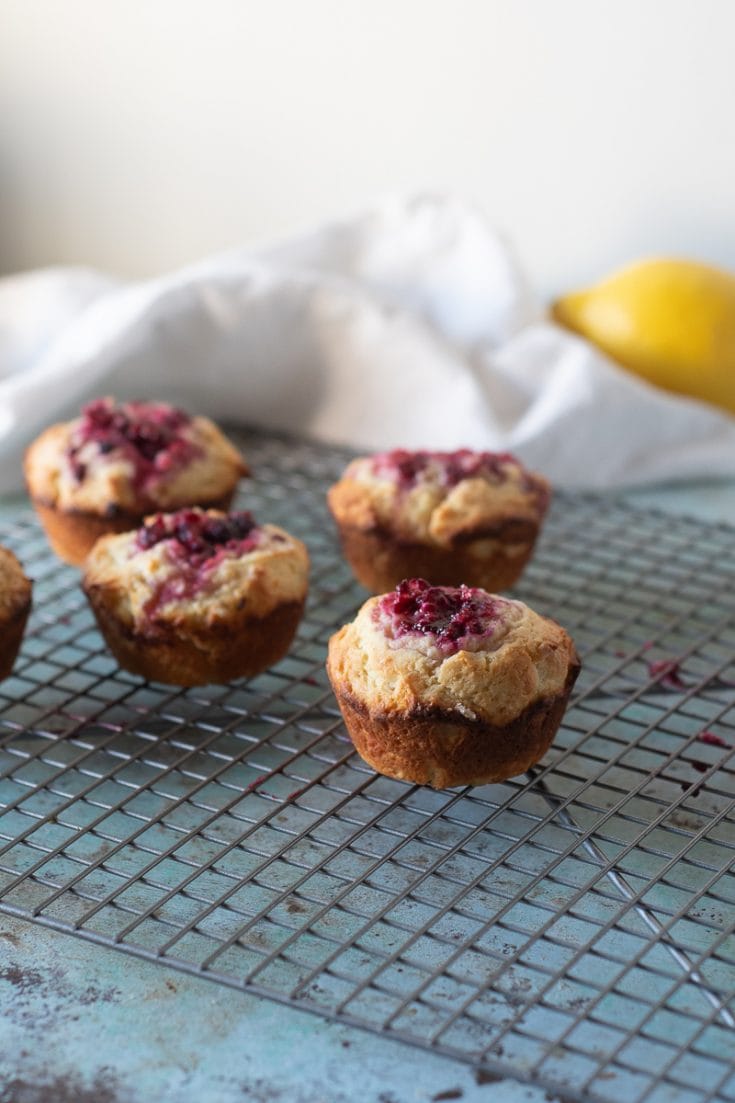I may earn from purchases through links in this post.
Christmas and New Year’s mornings are perfect times to enjoy a special breakfast.
Here is a collection of some of my favorite holiday breakfast and brunch recipes. They are mostly on the sweeter side, though there are bagels and buttermilk biscuits and bacon cheddar scones if you’re more of a savory fan, and they are all pretty carb-heavy.
But, hey, that’s what holidays are for! (And there are some gluten free cinnamon sugar oat muffins and rice flour waffles in there, too.)

Some of these recipes, like the cinnamon rolls or the coffee cardamom morning buns and bagels can be assembled the night before and baked in the morning.
Others, like the banana breads or pumpkin coffee cake with pecan streusel can be made a day or two ahead of time (and are easy to transport if you’re traveling).
Others, like the waffles or french toast or cranberry Dutch baby are easy to make and eat in under a half an hour of work.
And I absolutely support whipping up some eggs or cooking up some bacon or sausage if you like that sort of thing.
Merry everything! Enjoy your breakfast!
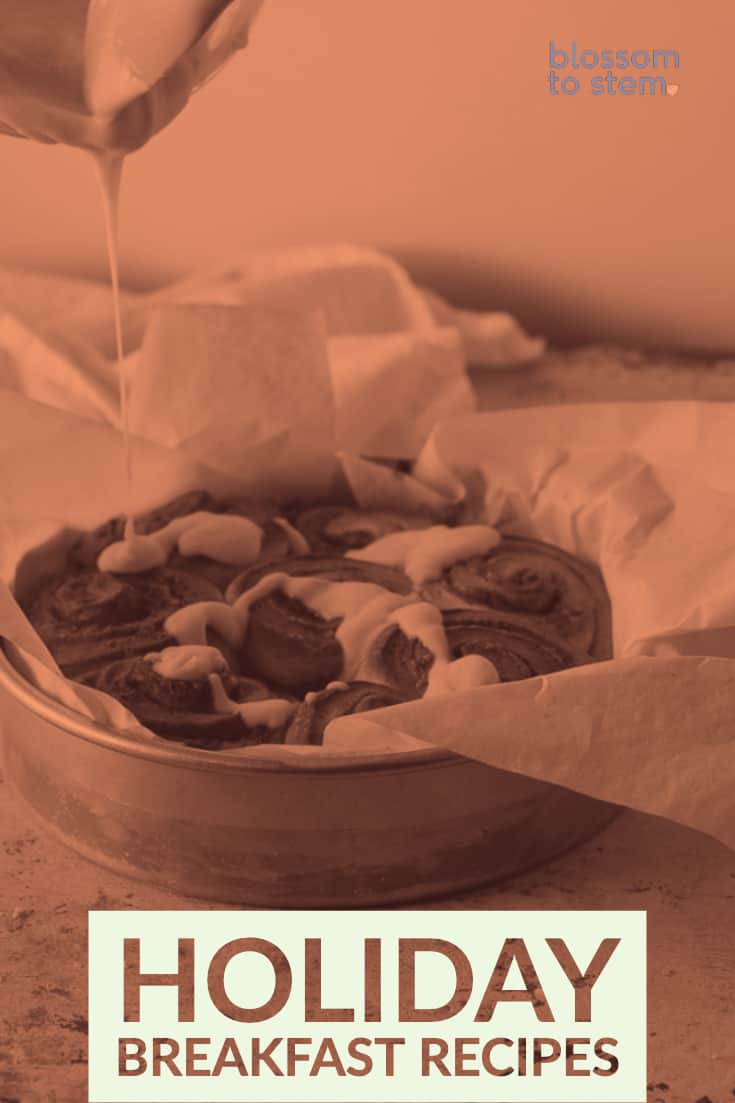
Holiday Breakfast and Brunch Recipes
These cinnamon rolls use the simplest no-knead brioche dough, which is an amazingly versatile dough for rich breakfast treats. The dough needs to rest overnight, so be sure to plan ahead, but relax knowing that there's hardly any work involved. These cinnamon rolls can be assembled the night before and covered and refrigerated overnight and baked in the morning for your convenience--they'll just take an extra few minutes to bake. The delightful richness of these cinnamon rolls mean that leftovers hold up well (not that you'll have any). I like to bake them in a cast iron pan which keeps them warmer for longer, but any 10-inch round pan will work.
These buttermilk waffles are light and custardy on the inside and golden brown on the outside. These are best made with real cultured buttermilk rather than any of the common substitutes, but if you don't have buttermilk available kefir is the best alternative. These waffles are barely sweet (the sugar helps with the browning) and work well with a variety of toppings from classic maple syrup to fruit to savory toppings if chicken and waffles is your thing. The yield on these will vary depending on your waffle maker. The waffles pictured here were made in a Belgian-style waffle iron, but this batter also works well in a more standard thinner American-style waffle iron.
This pumpkin coffee cake has a tender crumb, a generous mix of autumnal spices, and two layers of brown sugar pecan streusel.
It slices beautifully, travels well, and keeps for several days, which make it versatile.
I love this cake for breakfast alongside a mug of coffee, but it also works beautifully for dessert.
These morning buns pretty quick for anything involving a yeasted dough. They're warm from the oven about 90 minutes after you start them. You'll need to use instant yeast here (I like SAF Red Label), which can be mixed right in with the flour. Don't use active dry yeast, which needs to be proofed in liquid first. The filling is a simple mix of butter, brown sugar, instant espresso, and ground cardamom. The crème fraîche icing is rich with a generous hit of vanilla and a pleasant tang. You can make it with vanilla extract or, if you want to go the extra mile, swap in vanilla bean paste. (The Vermont Creamery Crème Fraîche with Vanilla Bean would also be a natural fit here.)
This banana bread has a mix of white and brown sugar, a generous amount of vanilla, a big handful of toasted pecans, chocolate chips (you can use chopped chocolate or chocolate chips—I like bittersweet or semisweet here, but you could even use milk chocolate if you like). Best of all, it is covered with a big-crumbed, brown sugar and cinnamon streusel topping, which makes it next-level good.
This quiche has a rich custardy filling that gets a bit of tang from a bit of crème fraîche.
The bacon is crisp and the Brussels sprouts are tender with lovely bits of caramelization. Gruyere cheese takes it over the top.
You can make this a day ahead of time and reheat it in the morning for a great brunch.
Buttermilk brings an unexpected tang to otherwise traditional French toast that plays beautifully with maple syrup. It's a great way to use up buttermilk you have lying around. The maple glazed peaches are totally optional, but they are nice. The same treatment works with just about any fruit. If you don't have peaches in season, head to the frozen aisle. Do use real maple syrup--the imitation stuff won't glaze the peaches in the same way.
This Dutch baby is a puffy, eggy oven pancake. It works best in an 8 or 10-inch cast iron skillet, but will work in any similarly sized oven-safe skillet. Mixing the batter in the blender helps to whip the eggs into a light and airy froth that gives it more height in the oven (you can also do this with a stick blender in a deep container). You can also mix it by hand, but you won't get the same amount of loft (but it will still be delicious). You can use fresh or frozen cranberries here. Because this is breakfast, I keep the sweetness in check. The tart cranberry flavor still comes through, but if you have a sweet tooth you can add more syrup or powdered sugar at the end. Chinese five spice, which contains cinnamon, fennel, cloves, star anise, and white pepper is a great spice blend to have in your baking arsenal. I think it pairs beautifully with the cranberries here.
Once while researching the origins of Carolina Gold rice, I stumbled upon a book titled The Carolina Rice Kitchen from 1900. It was a stunning revelation in many ways—here was an American cuisine based not on wheat, not on corn, but on rice. It’s filled with many useful recipes, but one that really captured my imagination was the rice waffle. Many, many old colonial and antebellum-era cookbooks contain receipts (the literary forebears of recipes) for “wafers,” which would eventually become “waffles,” and every reasonably well-equipped home kitchen would have a wafer iron or two. In those days, wafers tended toward the thinner and crispier side: the iron was filled with batter then held by hand over a flame or hot coals to do the baking. Early wafers and waffles were treated as breads (which they are) and were just as likely to be eaten with gravy or savory sauces as syrup or sweet preserves. In order to get just the texture we wanted and to work with our modern waffle irons, I wound up editing and adapting the original recipe pretty significantly, but the revelation of 100 percent rice flour waffles in our history was the most important thing. As a bonus to being exquisitely delicious with a particularly crisp texture, these waffles are gluten-free. In keeping with early American waffle traditions, we often treat these with a savory dish rather than sweet. They’ve been served with crispy duck confit, fried chicken and cream gravy, and many other combinations of the moment. Of course, you can enjoy them with butter, syrup, and fresh fruit if you like, but try them instead of mashed potatoes sometime when you’re cooking up fried chicken. PREP TIME: 45 minutes EQUIPMENT NEEDED: sifter, 4-quart mixing bowl, 1-quart mixing bowl, wire whisk, waffle iron MAKES: 6 waffles in a standard 5-inch or 6-inch home Belgian waffle iron
I love making muffins with alternative flours, which offer such a wealth of flavor options. Oat flour is one of the easiest to come by–you can make it by zizzing rolled oats in a food processor until they’re finely ground. If you are making these for someone with gluten sensitivity, be sure to look for oat flour or rolled oats that are certified gluten free (oats are often processed on equipment that also handles wheat). I like to make these with a pourable French-style yogurt, but they also work with Greek yogurt or kefir–I like them best with full fat, but low fat options also work. The muffins are a little fragile while they’re warm, so be gentle while rolling them in the cinnamon and sugar. You could make these with all-purpose flour if you prefer (just substitute the flour one for one and omit the xanthan gum).
These scones make a great savory addition to the breakfast or brunch table. They’d be great along side (or sandwiched around) some eggs. Keller and Rouxel say this is the most popular scone at Bouchon, and I’m not surprised. I like to use Nueske’s applewood-smoked bacon, which I’ve found at Gene’s Sausage Shop in Chicago, but I’m pretty sure any bacon you like will be just fine. These do need to be started a day ahead of time, but the great thing is that in the morning the only work you need to do is pull these out of the freezer and put them into the oven, which makes them perfect for brunch with company.
The key to the right texture here is high-gluten flour. I had trouble finding it in Chicago, but I was fortunate enough to have some generous benefactors (Dan's parents) send some my way. It is available online from the King Arthur Flour Baker's Catalogue. You may also substitute bread flour, according to Reinhart, who cautions that it won't be quite as chewy. I've had good results with barley malt syrup, which is available at most natural foods stores. Reinhart recommends using diastatic malt powder, which is also available from King Arthur Flour. In a pinch, honey or brown sugar will also yield tasty, if not quite characteristically bagel-like, results.
These scones are quite delicate and not too sweet. Any type of chocolate works here, and chocolate chips would be fine, but I prefer the texture of uneven bits of melting bittersweet. These are probably too delicate to stand up to any fresh or frozen fruit, but I have a hunch that dried fruits, such as currants, tart cherries, or apricot pieces would be lovely in lieu of chocolate. Cinnamon chips or other flavored chips could also work, if you aren’t in the mood for chocolate. With more than a cup of cream, they are not exactly health food, but they’re worth the splurge for a treat. A coarse sugar, such as turbinado or demerara will be prettier on the tops, but any mildly flavored sugar, including plain refined white table sugar, will do. You can replace a half cup of the all-purpose flour with whole wheat pastry flour, white whole wheat flour or regular whole wheat flour for a slightly heartier, but still tender and light, scone.
These buttermilk biscuits are light and flaky and buttery. I prefer to use an all-purpose flour with a mid-range protein content like Gold Medal for these biscuits. Avoid a higher protein all-purpose flour like King Arthur, which will result in biscuits that aren't quite as tender. (And southerners, I'm sorry to say I don't have easy access to White Lily, so I don't know how this particular recipe works with that, but if you try it, do report back!) Avoid buttermilk substitutes for these biscuits—it's essential for the flavor—but if you must use something else kefir is the next best option. This is also designed to work with American-style unsalted butter (higher fat European butters will cause these to spread more and not rise up so beautifully).
This is a lovely banana bread with a classic flavor profile. You can make your own oat flour by pulsing rolled or quick oats (but not steel cut) in a food processor or you can use a commercial oat flour. You could substitute all-purpose or whole wheat flour for the oat flour and it would still work, but I really like the homey oat flavor here. This is one of my favorite kinds of banana bread to have for breakfast. It feels wholesome enough that I don’t mistake it for dessert. You can freeze overripe bananas if you want to keep them around for whenever the urge for banana bread strikes. [Update: I just tested this using all oat flour, and it was great. It would be a great gluten free option for banana bread. It's a little more delicate than the part-wheat version. You could add a little xanthan gum for extra stability. Oats don’t contain gluten, but they’re often contaminated with wheat in processing, so be sure to make sure you’re using certified gluten free oat products if you’re making this for someone with gluten sensitivities.]
These scones are similar to the ones you find in American bakeries. They're crisp on the outside, tender on the inside with a dense, close crumb. They are enriched with butter and cream and raised with baking soda. The combination of orange zest and crystallized ginger is lovely here, especially with the tangy vanilla-scented crème fraîche icing. If you don't want to bother with icing (though, really, you should, this one is so easy and good), sprinkle the wedges of dough with sugar before baking.
These raspberry lemon muffins are, at heart, lemon muffins with jammy raspberry middles. The fats in this batter come from olive oil (choose a mellow one) and Greek yogurt. I recommend full-fat or 2% here for the best texture. Be careful when removing the muffins from the tin--the raspberry middles can get a bit messy. You can turn them out and accept a little mess or carefully remove them one by one from the muffin tin, your call.





